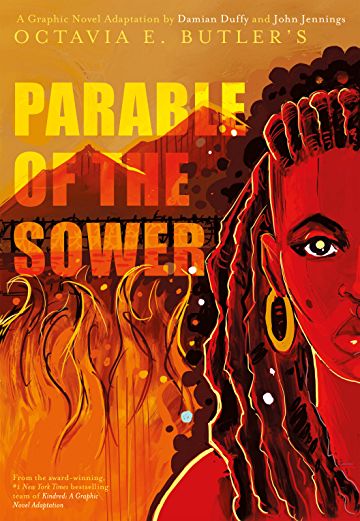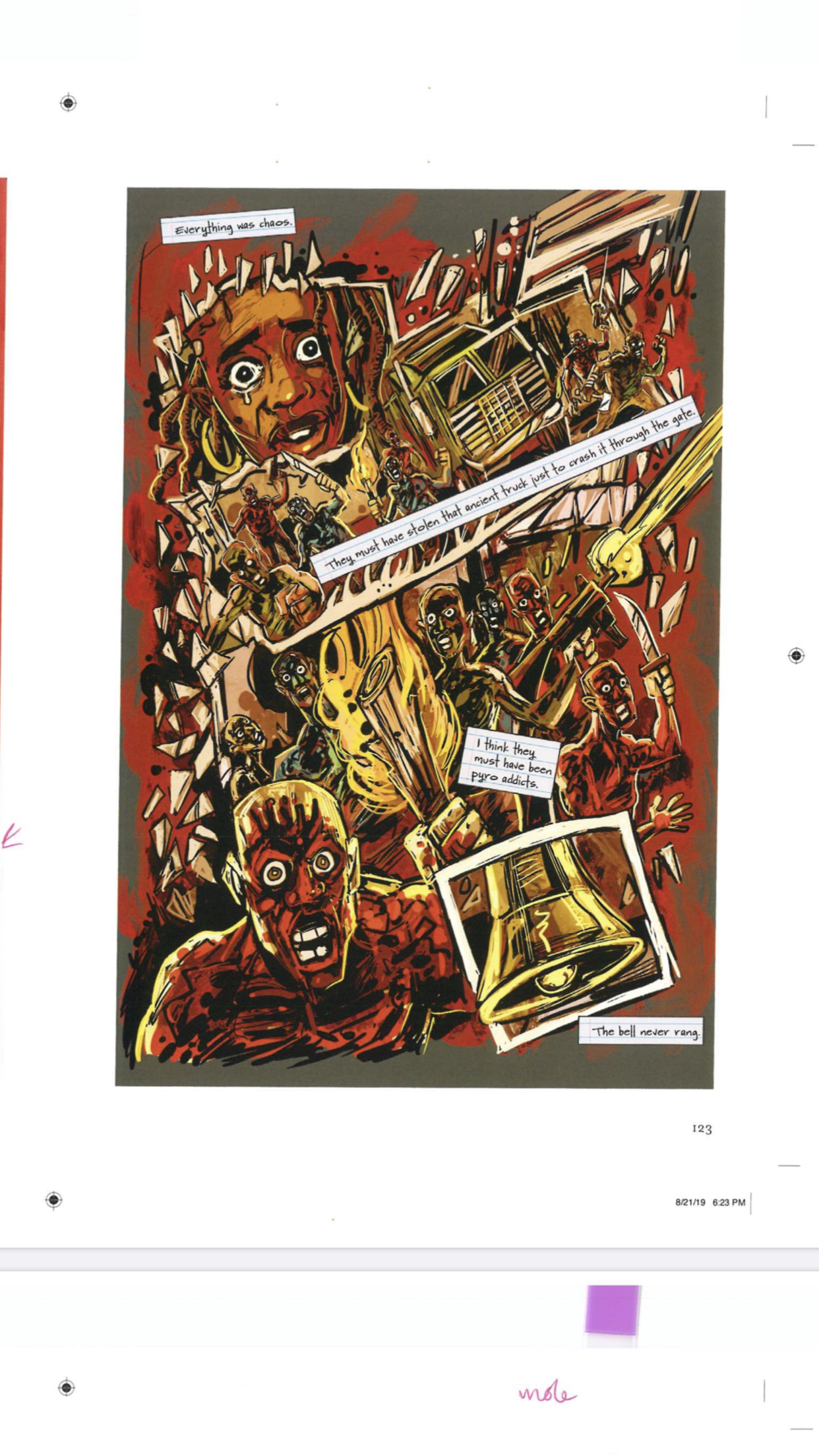
John Jennings’s work succeeds as sequential storytelling and approaches the level of iconography regularly. This page from the forthcoming graphic novel adaptation of Octavia Butler’s Parable of the Sower is a prime example of his acumen.
—Ayize Jama Everett
THE BELIEVER: When did you first “see” this page? Was it when you read the book? When you read Damian Duffy’s [his collaborator on Kindred and Parable] script page?
JOHN JENNINGS: I knew that the “Fall of Robledo” was a key aspect of the story, so it had to be dramatic. Damian brings a very cinematic style to his writing and that comes through here. I also knew that I didn’t have a lot of space to make an impact. The page had to be powerful, terrifying, and immediate.
BLVR: It is a pivotal moment in the book. Do you remember the first time reading it?
JJ: Yes. Because the story is being told in the first person via Lauren’s journal, it jumps around in time a lot. She is alluding to this happening but it still hits you in the gut when it [the Fall of Robledo] finally jumps off. You know it’s happening, but Octavia still manages to surprise us!

BLVR: Yeah, it’s kind of a legendary mic drop. I know that you sometimes work from rough sketches on paper that you scan and sometimes you go full digital. What was the process with this one?
JJ: Actually, I’ve gone fully digital. The iPad Pro with The Procreate app has changed everything about how I work. Kindred may be the last sequential work I do by hand. This book was totally done in the IPad, and it was great!
BLVR: Why do you find working digital better than the old school pen and Bristol board?
JJ: It’s fast and flexible. I can make changes very quickly. There’s no scanning and no cleanup of scans. I actually use two iPads. I work on one while the other is charging: sort of like how a photographer charges flashes. This book is almost 300 pages and it was totally drawn and colored in about eight months. No way that would have been possible with an analog process. Not without an injury. I know that from experience.
BLVR: So it’s physically taxing to get some of this stuff done. Let’s talk about the panel breakdown or lack thereof is on this page. How did you construct it?
JJ: After reading the script and taking notes, I first lay down an idea of the design or flow of the page. Then I sketched out the figures with...
You have reached your article limit
Sign up for a digital subscription and continue reading all new issues, plus our entire archives, for just $1.50/month.
Already a subscriber? Sign in




